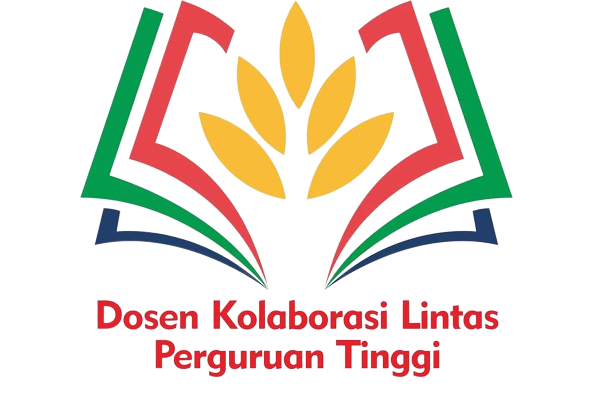Implementation of Child-Friendly City Program Policy by Department Women and Children Empowerment Service Pekanbaru
DOI:
https://doi.org/10.69812/jgs.v1i2.68Keywords:
Policy, Implementation, Child-Friendly City ProgramAbstract
In supporting the success of the legislation on child protection, the government is implementing the Child-Friendly City/District (KLA) program across Indonesia. Based on the development of the Child-Friendly City program implemented in Pekanbaru, issues concerning child protection are still relatively low. This is due to Pekanbaru being one of the major cities that has experienced rapid changes and development on the island of Sumatra. The development of Pekanbaru has attracted many individuals seeking better livelihood opportunities in the city. The objective of this study is to examine the implementation of the child-friendly city program policy by the Office of Women's Empowerment and Child Protection in Pekanbaru, as well as the factors impeding its effectiveness. The research employs a descriptive quantitative method, with data collection conducted through interviews, observations, questionnaires, and documentation. The key informant for this study is the Head of the Office of Women's Empowerment and Child Protection of Pekanbaru. Meanwhile, the other informants include the Head of the Child Protection and Empowerment Division, the Head of the Regional Planning Agency, the Chairman of the Women and Child Protection Integrated Service Center (P2TP2A), and the Child Forum of Pekanbaru. The results of the study indicate that, based on the research findings and analyses conducted by the author, the implementation of the child-friendly city program by the Office of Women’s Empowerment and Child Protection in Pekanbaru is considered to be inadequate. This deficiency is attributed to the high number of reported cases handled by the Office, which serves as the agency responsible for addressing and mitigating violence against women and children
Downloads
References
Adi, M. F. (2019). Hadhonah Rights of Children (Not Mumayyis) Based on Compilation of Islamic Law and Child Protection Act. El-USRAH: Jurnal Hukum Keluarga, 1(1), 75. https://doi.org/10.22373/UJHK.V1I1.5565
Amellia, C., & Meiwanda, G. (2023). Agility Governance in Implementing Child Friendly Cities in Pekanbaru City in the Special Protection Cluster. Sosioedukasi: Jurnal Ilmiah Ilmu Pendidikan Dan Sosial, 12(1), 143–150. https://doi.org/10.36526/SOSIOEDUKASI.V12I1.2619
Bungin, M. B. (2007). Penelitian Kualitatif. Kencana.
Cordero Vinueza, V. A., Niekerk, F., & van Dijk, T. (2023). Making child-friendly cities: A socio-spatial literature review. Cities, 137, 104248. https://doi.org/10.1016/J.CITIES.2023.104248
Edward III, G. C. (1980). Implementing public policy. Congressional Quarterly Press.
Fitriani, R., Krisna, L. A., Natsir, M., & Zulfiani, Z. (2023). Legal Protection for Wife and Child as Consequence of Head of Family’s Criminal Imprisonment Enforcement. Volksgeist: Jurnal Ilmu Hukum Dan Konstitusi, 6(1), 77–88. https://doi.org/10.24090/VOLKSGEIST.V6I1.8232
Ismaidar, I., & Rahmayanti, R. (2023). Legal Protection for Children as Victims of Domestic Violence. Randwick International of Social Science Journal, 4(1), 106–110. https://doi.org/10.47175/RISSJ.V4I1.628
Jenssen, B. P., Walley, S. C., Boykan, R., Caldwell, A. L., Camenga, D., Groner, J. A., Marbin, J. N., Mih, B., Rabinow, L., Blake, G. H., Smith, K. S., Baumberger, J. D., Gonzalez, L., Agarwal, R., Quigley, J., Zoucha, K., Kurien, C., Ba’Gah, R., & Jarrett, R. (2023). Protecting Children and Adolescents From Tobacco and Nicotine. Pediatrics, 151(5). https://doi.org/10.1542/PEDS.2023-061806/191067
Luhmann, N. (1992). What is Communication? Communication Theory, 2(3), 251–259. https://doi.org/10.1111/J.1468-2885.1992.TB00042.X
Mackay, R. (2003). Family reselience and good child outcome: an overview of the research literatur. Social Policy Journal of New Zealand, 6(20), 98–118.
Magnano, P., Paolillo, A., & Giacominelli, B. (2015). Dispositional optimism as a correlation of decision-making styles in adolescence. SAGE Open, 5(2), 1–12. https://doi.org/10.1177/2158244015592002
Meadow, S. G. (2005). The resilience of language: What gesture creation in deaf children can tell us about how Aal children learn language: Vol. Psychology Press (3rd ed.).
Merton, R. K. (2007). Bureaucratic Structure and Personality. In Personality and social systems. John Wiley & Sons Inc. https://doi.org/10.1037/11302-024
Ojha, H. R., Ford, R., Keenan, R. J., Race, D., Carias Vega, D., Baral, H., & Sapkota, P. (2016). Delocalizing Communities: Changing Forms of Community Engagement in Natural Resources Governance. World Development, 87, 274–290. https://doi.org/10.1016/J.WORLDDEV.2016.06.017
Preston, P. (2000). Reshaping Communications. In Reshaping Communications. Sage Publications Ltd.
Rauch, J. E., & Evans, P. B. (2000). Bureaucratic structure and bureaucratic performance in less developed countries. Journal of Public Economics, 75(1), 49–71. https://doi.org/10.1016/S0047-2727(99)00044-4
Sapsağlam, Ö., & Eryılmaz, A. (2024). Building Child-Friendly Cities for Sustainable Child Development: Child-Friendly City Scale-Child Form. Sustainability, 16(3), 1228. https://doi.org/10.3390/SU16031228
Sugiyono, S. (2016). Memahami Penelitian Kualitatif. In Alfabeta. Alfabeta.
Svobodova, K., Vojar, J., Yellishetty, M., & Janeckova Molnarova, K. (2020). A multi-component approach to conceptualizing the reputation of the mining industry from a stakeholder perspective. Resources Policy, 68. https://doi.org/10.1016/j.resourpol.2020.101724
Thomas, S., Van Schalkwyk, M. C. I., Daube, M., Pitt, H., McGee, D., & McKee, M. (2023). Protecting children and young people from contemporary marketing for gambling. Health Promotion International, 38(2). https://doi.org/10.1093/HEAPRO/DAAC194
Utami, D. W., Salsabila, S. I., & Widodo, B. W. (2024). Firm Performance and Financial Distress: The Moderation Role of Board Gender Diversity. Journal Governance Society, 1(1), 53–66. https://doi.org/10.69812/JGS.V1I1.41
Woodman, E., Roche, S., & McArthur, M. (2023). Children’s participation in child protection—How do practitioners understand children’s participation in practice? Child & Family Social Work, 28(1), 125–135. https://doi.org/10.1111/CFS.12947
Downloads
Published
How to Cite
Issue
Section
License
Copyright (c) 2024 Muhammad Syukri, Panca Satyo Prihatin

This work is licensed under a Creative Commons Attribution-ShareAlike 4.0 International License.
You are free to:
- Share — copy and redistribute the material in any medium or format for any purpose, even commercially.
- Adapt — remix, transform, and build upon the material for any purpose, even commercially.
- The licensor cannot revoke these freedoms as long as you follow the license terms.
Under the following terms:
- Attribution — You must give appropriate credit, provide a link to the license, and indicate if changes were made . You may do so in any reasonable manner, but not in any way that suggests the licensor endorses you or your use.
- ShareAlike — If you remix, transform, or build upon the material, you must distribute your contributions under the same license as the original.
- No additional restrictions — You may not apply legal terms or technological measures that legally restrict others from doing anything the license permits.















